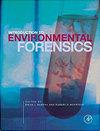2000年来印度西南部喀拉拉邦海岸稀土元素分布的控制
IF 1.2
4区 环境科学与生态学
Q4 ENVIRONMENTAL SCIENCES
引用次数: 3
摘要
印度西南海岸的气候变化对印度南部的社会经济发展和生态系统有着重要的影响。在这里,我们介绍了印度西南部喀拉拉邦海岸Cherai沉积物岩心的近2000 cal年稀土元素记录。轻稀土元素(LREE)在岩心沉积物中含量最高,其次为中稀土元素(MREE)和重稀土元素(HREE)。总REE (ΣREE)与沉积物的细粒度组分、Y、Al、Ti、Fe和总有机碳含量呈显著相关,表明REE、总有机碳与细粒度组分之间存在内在联系。轻稀土和重稀土由于在细馏分上的高吸附而比重稀土富集。陆源元素相关性不强,且Y/Ho元素比值较低,说明源物质发生了较小的转移。在温暖(中世纪暖期/中世纪气候异常(MWP/MCA))和寒冷的小冰期(LIA)期间,高ΣREE值表明在这些间隔期间岩石物质大量流入。除MCA外δCe值均为负,表明烃源岩为亚氧环境,δEu值表明烃源岩为富长石,来源于中等风化沉积。稀土元素的变化受河流供给、生物生产力和氧化还原条件等因素的控制。印度西南海岸季风降水与REE记录之间存在密切联系。在暗冷期(Dark Age Cold Period, DACP)/MWP过渡期间,记录了季风的突然增加,季风降水在LIA和Current Warming Period期间进一步减少。Cherai核REE记录与百年际暖/冷事件同步,基本遵循北半球气候周期。本文章由计算机程序翻译,如有差异,请以英文原文为准。
Controls on rare earth elements distribution from Kerala coast, southwest India over the past 2000 years
Abstract Climate changes on the Southwest coast of India have essential impacts on social and economic development, and the ecosystem of Southern India. Here, we present the last 2000 cal yr AD rare earth elemental records of the sediment core from the Cherai, Kerala coast, southwest India. The light rare earth elements (LREE) were the most abundant fraction in the core sediment, followed by medium rare earth elements (MREE) and heavy rare earth elements (HREE). Total REE (ΣREE) showed a significant correlation with fine fractions and Y, Al, Ti, Fe and total organic carbon content of the sediments, suggesting an intrinsic relationship between REE, total organic carbon and fine grain-size fraction. The LREE and MREE were enriched over the MREE due to their high adsorption with the fine fraction. The lack of correlation between terrigenous elements and low Y/Ho elemental ratio suggests a minor shift in the source materials. High ΣREE values during warm (Medieval Warm Period/ Medieval Climate Anomaly (MWP/MCA) and cold Little Ice Age (LIA) periods indicate a high influx of lithogenous materials during these intervals. The negative δCe values except MCA suggest a suboxic condition and the δEu values suggest feldspar-rich source rock material derived from moderately weathered sediments. It also indicates that the REE variations are controlled by factors like river supply, biological productivity and redox condition. A close link between monsoonal precipitation and REE records existed on the southwest coast of India. During the Dark Age Cold Period (DACP)/MWP transition, a sudden increase in monsoon is documented and the monsoon precipitation was further decreased during LIA and Current Warming Period. The Cherai core REE records synchronize with the episodes of centennial-scale warm/cool events and essentially follow the northern hemispheric climate cycles.
求助全文
通过发布文献求助,成功后即可免费获取论文全文。
去求助
来源期刊

Environmental Forensics
环境科学-环境科学
CiteScore
4.90
自引率
5.60%
发文量
23
审稿时长
3 months
期刊介绍:
Environmental Forensics provides a forum for scientific investigations that address environment contamination, its sources, and the historical reconstruction of its release into the environment. The context for investigations that form the published papers in the journal are often subjects to regulatory or legal proceedings, public scrutiny, and debate. In all contexts, rigorous scientific underpinnings guide the subject investigations.
Specifically, the journal is an international, quarterly, peer-reviewed publication offering scientific studies that explore or are relevant to the source, age, fate, transport, as well as human health and ecological effects of environmental contamination. Journal subject matter encompasses all aspects of contamination mentioned above within the environmental media of air, water, soil, sediments and biota. Data evaluation and analysis approaches are highlighted as well including multivariate statistical methods. Journal focus is on scientific and technical information, data, and critical analysis in the following areas:
-Contaminant Fingerprinting for source identification and/or age-dating, including (but not limited to) chemical, isotopic, chiral, mineralogical/microscopy techniques, DNA and tree-ring fingerprinting
-Specific Evaluative Techniques for source identification and/or age-dating including (but not limited to) historical document and aerial photography review, signature chemicals, atmospheric tracers and markets forensics, background concentration evaluations.
-Statistical Evaluation, Contaminant Modeling and Data Visualization
-Vapor Intrusion including delineating the source and background values of indoor air contamination
-Integrated Case Studies, employing environmental fate techniques
-Legal Considerations, including strategic considerations for environmental fate in litigation and arbitration, and regulatory statutes and actions
 求助内容:
求助内容: 应助结果提醒方式:
应助结果提醒方式:


